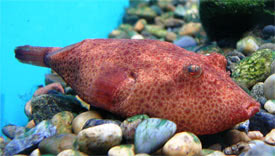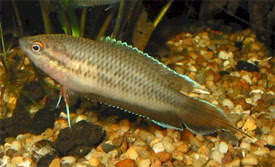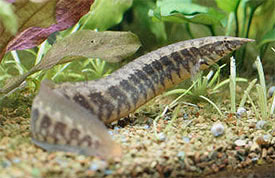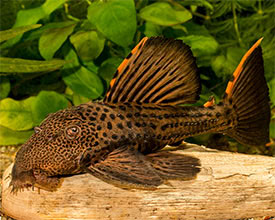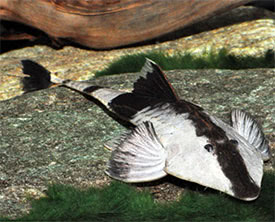
 Magyarul / Hungarian
Magyarul / Hungarian
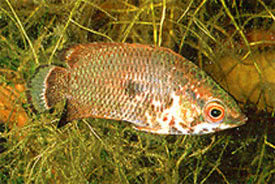
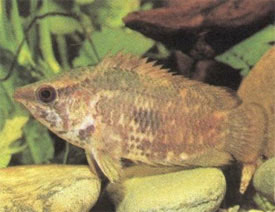
- Scientific name: Ctenopoma weeksii
- Synonyms: Ctenopoma oxyrhynchus, Ctenopoma oxyrhynchum, Anabas weeksii, Anabas oxyrhynchus
- Common name: Mottled ctenopoma
- Group: Labyrinth fishes
- Habitat:Africa; Congo River basin in Cameroon and Congo.
- Size: 10 cm
- Biotope: Inhabits in slow-flowing or still waters, lakes and swamps in the marginal areas with desne vegetation.
- Social behavior: Though generally peaceful, the fish may become predatory toward smaller fish. Best kept in pairs in a species tank, or can be kept in a community tank with larger peaceful species.
- Diet: Omnivorous; in aquarium they accept live and frozen foods.
- Breeding: Hard
- Tank: Minimum 80 litres
- Population: 1 pair for 100 litres
- Decoration: Arrange a densely planted tank with many hiding places made of roots, and with open areas for swimming. Use dim lighting or use some floating plants, and cover their tank well, as they might jump out.
- Temperature: 24-28 °C
- pH: 6.2-7.2
- Hardness: 4-15 NK°
- Lifespan: 8 years
Description: Ctenopoma weeksii has a yellowish-brownish base color with a large spot on each side of the body. The fins are brown with black edge. They have an ability to change color very quickly when startled, this is where they get their common name: Mottled ctenopoma.
Males have more developed spines on their gill covers, and their dorsal and anal fins are more sharply pointed. The fish become sexually mature in 2 years of age. The breeding tank should be 50 litres with a temperature of 24 °C and contain lots of floating plants. The fish usually spawn in the evening hours. The quick breeding takes place usually over the substrate, Mottled ctenopoma do not build bubble nest and the parents do not care for the eggs. The small oleagionus eggs float to the surface into the floating plants. Parents may eat the eggs, so it is recommended to remove them at this point. The eggs hatch in 24 hours, and the fry become free swimming in 2 or 3 days and should be raised with brine shrimp nauplii.












































